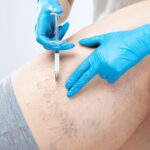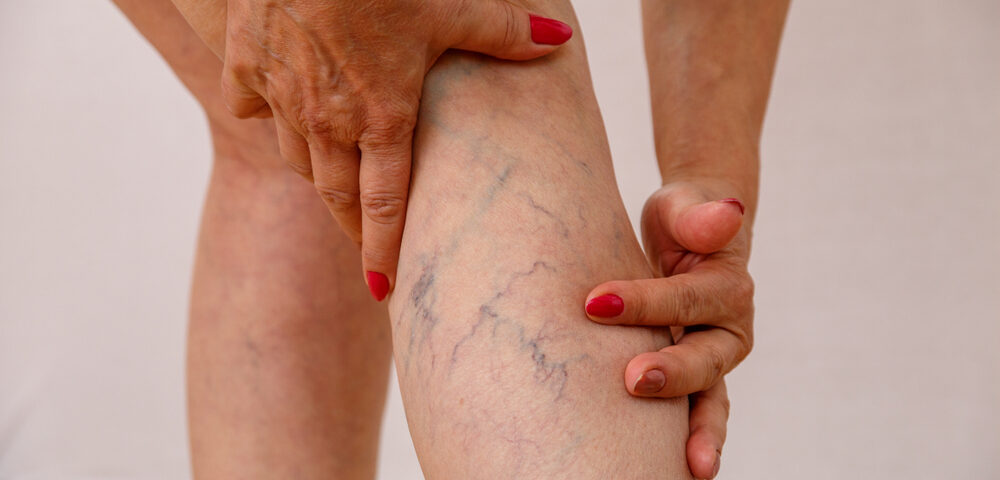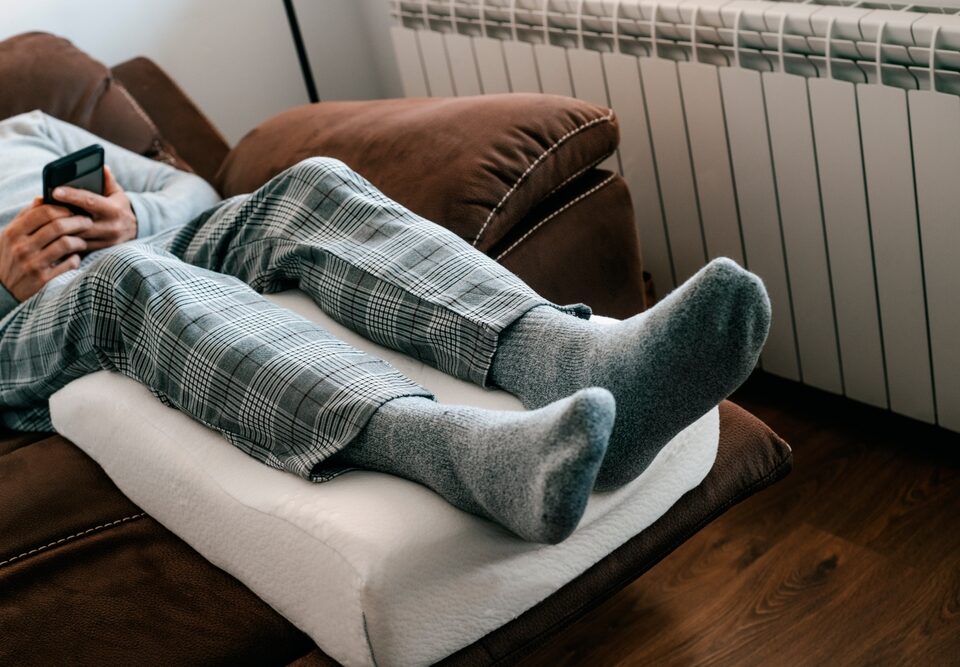
Urgent Sclerotherapy Appointments in Bel Air, Maryland
September 29, 2025
How to Minimize Pain While Traveling With Common Vein Conditions
October 29, 2025Peripheral Venous Disease in Maryland is one of the most common yet often overlooked circulatory disorders affecting adults across the country. It develops gradually, frequently dismissed as simple leg fatigue or aging.
Early detection of Peripheral Venous Disease (PVD) can prevent long-term damage, improve mobility, and significantly enhance quality of life. Understanding the signs, risks, and treatment options empowers patients to take action before symptoms worsen.
What is Peripheral Venous Disease in Maryland?
Peripheral Venous Disease in Maryland occurs when the veins — especially those in the legs — can no longer efficiently return blood back to the heart. This problem often stems from malfunctioning vein valves, which normally keep blood flowing upward against gravity.
PVD is a progressive condition that can range from mild discomfort to severe venous insufficiency. It can affect both men and women but is particularly common in adults over 40 and those with a family history of vein problems.
Common Symptoms of PVD
Many people mistake early signs of PVD for temporary fatigue or poor circulation. However, subtle symptoms often signal the beginning of venous insufficiency. Recognizing them early is the key to successful management.
Typical symptoms include:
- Aching, heaviness, or throbbing in the legs especially after long periods of standing or sitting.
- Swelling (edema) in the ankles or calves, often worse at the end of the day.
- Visible varicose veins or spider veins, which may appear blue, purple, or twisted beneath the skin.
- Skin discoloration or darkening around the ankles or lower legs.
- Itching, burning, or tenderness in affected areas.
- Leg cramps or restlessness at night.
As the disease advances, symptoms can become more severe. Skin may thicken, ulcers may develop, and infection risk increases. Early medical evaluation is crucial before these complications appear.
Why Early Detection Matters
The importance of early detection of Peripheral Venous Disease in Maryland cannot be overstated. Identifying venous problems early allows for simple, minimally invasive treatments that prevent progression and restore healthy circulation.
Here are some key benefits of early diagnosis and intervention:
Prevention of Complications
Untreated PVD can lead to serious conditions such as chronic venous insufficiency, skin ulcers, and blood clots (deep vein thrombosis). Early treatment reduces the likelihood of these complications and helps maintain long-term leg health.
Improved Comfort and Mobility
Leg pain, heaviness, and swelling can make it difficult to stand, walk, or exercise comfortably. Detecting and treating the disease early relieves symptoms quickly, helping patients return to their normal activities without discomfort.
Better Cosmetic Outcomes
Varicose and spider veins may start as cosmetic concerns but often indicate deeper venous issues. Addressing them early improves both appearance and overall vascular health.
Reduced Healthcare Costs
Advanced venous disease requires more complex, costly treatments. Early intervention with minimally invasive procedures not only prevents complications but also saves patients time, money, and discomfort in the long run.
Enhanced Quality of Life
Healthy legs mean more than good circulation — they mean better sleep, higher energy levels, and greater confidence in daily life.
Who is at Risk for Peripheral Venous Disease in Maryland?
Certain factors increase your risk of developing PVD. While some are beyond your control, others can be managed with lifestyle adjustments and preventive care.
Common risk factors include:
- Genetics: A family history of varicose veins or venous insufficiency significantly increases risk.
- Age: Vein valves naturally weaken over time, making older adults more susceptible.
- Occupation: Jobs that require prolonged standing or sitting (such as nursing, teaching, or driving) can strain veins.
- Obesity: Excess body weight increases pressure in the leg veins.
- Pregnancy: Hormonal changes and increased blood volume can contribute to vein problems.
- Sedentary lifestyle: Lack of movement reduces circulation, allowing blood to pool in the legs.
- History of blood clots: Past clots or vein trauma can permanently weaken valves.
If one or more of these factors apply to you, it’s wise to schedule a vein evaluation — even if you don’t yet have visible symptoms.
How Peripheral Venous Disease Is Diagnosed
Diagnosis begins with a physical exam and a detailed review of your medical history. A duplex ultrasound — a painless, noninvasive imaging test — is typically used to assess blood flow and detect valve dysfunction or clot formation.
This diagnostic process allows vein specialists to determine whether your symptoms stem from surface-level veins or deeper venous insufficiency.
At The Vein Center of Maryland, our experienced team uses advanced imaging technology to identify even the earliest signs of PVD. Once diagnosed, we create a personalized treatment plan designed to relieve symptoms and prevent future complications.
Preventing Peripheral Venous Disease in Maryland
Even with a family history of vein problems, you can reduce your risk by taking proactive steps:
- Maintain a healthy weight.
- Exercise regularly, focusing on activities that promote circulation like walking or swimming.
- Elevate your legs periodically throughout the day.
- Avoid sitting or standing in one position for too long.
- Wear compression stockings if recommended by your physician.
- Avoid smoking, which can damage blood vessels.
Small lifestyle changes, combined with professional monitoring, can dramatically improve vein health and slow disease progression.
Take Control of Your Vein Health in Maryland
At The Vein Center of Maryland, our board-certified vein specialists are dedicated to helping patients across Maryland detect, treat, and manage venous disease using advanced, minimally invasive techniques. We provide personalized care focused on comfort, results, and lasting relief.
If you’ve noticed leg swelling, heaviness, or visible veins, don’t wait for symptoms to worsen. Contact us online or call The Vein Center of Maryland today at 410-970-2314 to schedule your free consultation and take the first step toward healthier circulation.
Early detection saves more than your veins — it protects your overall well-being.



